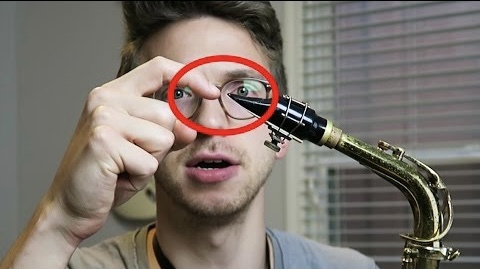 "Tongue" is a very common performance skill for saxophone performers, because we can see it in almost every piece of music and even in etudes. At the same time, the skill of "tongue" has also troubled many beginners of saxophone.
"Tongue" is a very common performance skill for saxophone performers, because we can see it in almost every piece of music and even in etudes. At the same time, the skill of "tongue" has also troubled many beginners of saxophone.
The technique of "tongue" can be used in all kinds of music works of saxophone, and sometimes there will be multiple applications of tongue in the same music. At the same time, the playing process of tongue should also change with the style of the music we play. Therefore, our mastery of tongue skills and the quality of tongueperformance will have a great impact on our performance.
"Tongue" practice is a very long process. At the beginning, we usually do a lot of single exercises. Because the tongue happens to be the part we seldom use at ordinary times, we may feel kind of frustration when we suddenly train a large number of tongue parts. For example, tongue stiffness, uncontrolled tongue, inflexible tongue, tongue pain and so on will occur. Some students said that after a lot of practice, the state of the tongue would return to the previous state the next day. This is because tongue itself is a skill that can only be improved through continuous and repeated practice. Therefore, we need to strengthen our will and persist in practicing.
Tonguing Basics for Saxophone Playershttps://youtu.be/EqyAYTwpUM8

Tongue and mouthpiece:
Tongue is actually the cooperation between tongue, breath, mouthpiece and musical instrument. Therefore, before practicing "tongue", we should mainly understand and learn the relationship between tongue and mouthpiece.
Tongue:
Before we begin to learn how to play mouthpiece, let's think about a question: which part of the tongue should we use to touch the mouthpiece?
When we play tongue, we need to ensure the clarity and speed of the sound, so we need to find the most flexible part of our tongue, which is the tip of the tongue. At the beginning of performing, some students may feel more comfortable using the middle part of their tongue to play, but the tongue played with the tip of their tongue is the clearest, lightest, cleanest and fastest. However, this does not mean that it is wrong to use other parts of the tongue to play, and it is a summary and accumulation of experience that the tip of the tongue can play a better tongue. You can do more performance analysis and comparison in ordinary times.
In the last article, we have talked about how to do the tongue in the correct saxophone.
https://www.sixmonthsrebellion.com/blog/posts/deep-analysis-of-saxophone-playing-embouchure-learn-the-four-methods-to-solve-problems-of-embouchure-easily
When we play tongue, we should try to read the word "Te" on this basis to understand the action of the tongue. When playing tongue, our mouth should always be full of breath. Even when the tip of the tongue blocks the vent, the interior of the mouth should still be full of breath. Because the correct tongue requires that the sound should be broken but the breath should not be broken, only in this way can we play elastic and full tongue. When beginners practice tongue, most of them will have problems such as excessive saliva or stiff tongue, which will lead to unclean, unclear and inflexible tongue. When we try to play it with the tip of the tongue, this situation will be changed to a great extent.

Mouthpiece:
When we play tongue, it mainly refers to the acoustic effect produced by the tongue blocking the air outlet of the mouthpiece instantaneously. Our tongue should exert certain pressure on the mouthpiece to make it. If we use our tongue to touch the position slightly above the front of the mouthpiece, the tongue played here is usually soft, full and elastic, which can be applied to most musical styles. However, when we touch the position directly in front of the mouthpiece with our tongue, the tongue we play is more capable and powerful, which is more suitable for us that requires strong strength and strength.
How to Tongue on the Sax for a HUGE Soundhttps://youtu.be/bQXXubVpIzA

How to practice tongue:
Practice tongue should be based on playing long notes. In order to better practice tongue, we should practice with the metronome.
For example: first let's adjust the speed of the metronome to 80, and then play and make tongue regularly following this speed. When we are proficient in playing, we can make tongue twice, three times, four times or even up to six times in one beat.
With the improvement of our playing proficiency, we can appropriately speed up the metronome. A high-quality tongue will not be limited by the speed of performance, nor by the breath. At the same time, we should not be impatient when practicing tongue, but learn to enjoy the practice process. I hope you can practice more and play light, full and elastic tongue as soon as possible.




